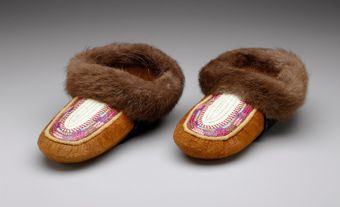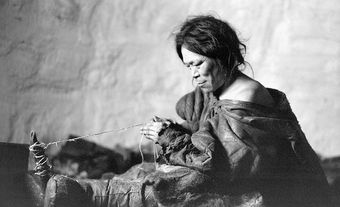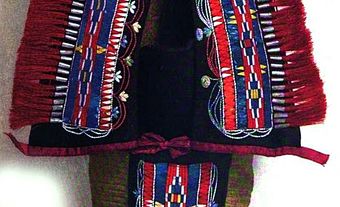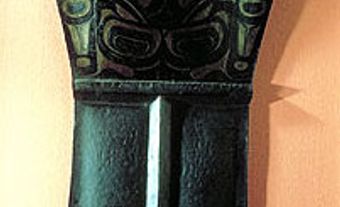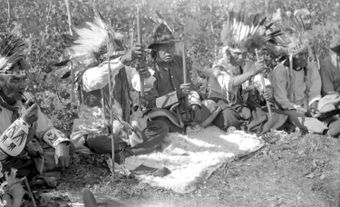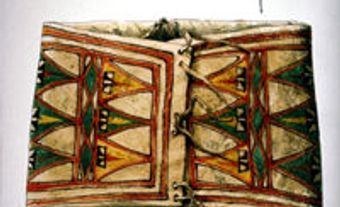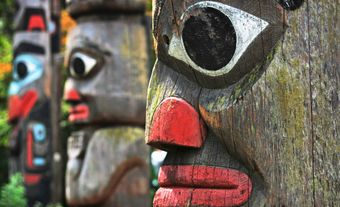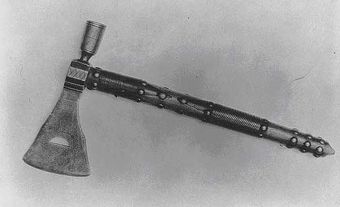
History
Historically, the pump drill has been used by the Inuit, the Indigenous peoples of the American Southwest and the Haudenosaunee (Iroquois). The tool may have come into North America from northern Asia, where it was also quite common. It was primarily used to start fire and drill holes into hard stone for construction projects, and into bone and shell for the making of jewellery.
Function
The drill consisted of a crossbar with a hole, through which a shaft was run. Cords were tied to the top of the shaft and to the two ends of the crossbar. When the crossbar was pushed down, the shaft rotated, helped along by the cords. As the rotating shaft did not spin fast enough to rewind the cords, a flywheel attached to the shaft served to rewind the cord and keep the shaft spinning continuously, first in one direction, then in the other. In some drills, a cap mounted on top of the shaft enabled the user to increase the downward pressure of the drill.
Contemporary Use
After the 19th century, modernized power tools replaced the pump drill. However, the pump drill is still used today by some specialized carpenters and Indigenous craftspeople.

 Share on Facebook
Share on Facebook Share on X
Share on X Share by Email
Share by Email Share on Google Classroom
Share on Google Classroom
